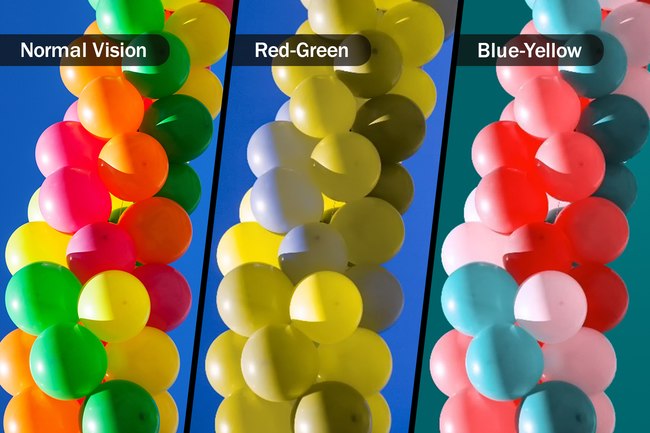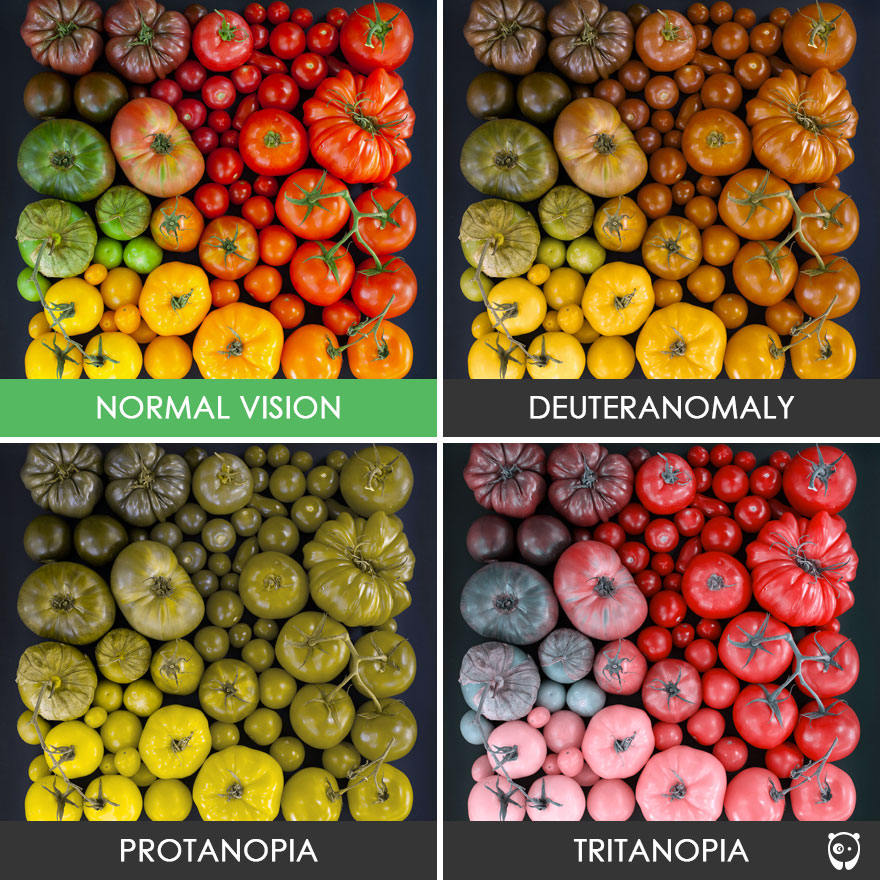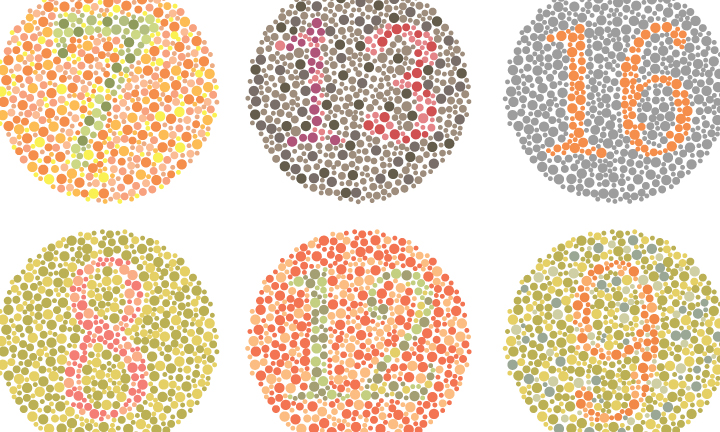Different Types of Color Blindness and Distinguishing Them
/What is color blindness?
Most people share a similar or identical color vision experience. In simple terms, this means that we see colors in roughly the same way, with very little to no variation. Your red is my red, your blue is my blue, and so on. You get the idea. Color blindness, also known as color vision deficiency, is a condition in which the individual has a different color perception to the one most people have. Different forms of color deficiency are usually called color blindness because of the severe level of impairment they can cause.
People who experience color blindness aren’t necessarily aware of the differences among colors most people see. In fact, people with mild color blindness might not be aware that they’re living with the condition at all. In most cases, color blindness is detected via clinics and through lab tests. Color vision deficiency is more common than you might think. Around 8% of men worldwide have the condition, but only 0.5% of women experience the same.
Why the disparity between men and women?
The genes which are responsible for the most common type of inherited color blindness are carried over on the X chromosome. Males, as we know, only have one X chromosome, but females have two. With females, if only one of the X chromosomes is functional, it will compensate for the loss on the other one. With males, if the X chromosome is defective, there’s no backup, no safety net to rely on. This inheritance pattern is usually called X-linked. Color blindness, if inherited, can not only be present at birth, but it can also show up during childhood or even later in life during a person’s adult years.
How many different types of color blindness are there?
The three main types of color blindness are usually caused by inherited defects in the genes of the individual. Most defects affect the photopigment’s color sensitivity, but in severe cases, the defect results in complete color blindness. The type of defect, along with the affected cone, dictates the type of color blindness present. Red, green, and blue color deficiency, are all possible, but some are more probable than others.
Red-Green Blindness
This is the most common type of hereditary blindness and it’s mostly a consequence of a defective red cone or a defective green cone. The red cone is known as a protan, and the green cone is known as a deutran. From both cones stem four different color blindness conditions.
Protanomaly
Protanomaly is associated with abnormal red cone cell photopigments. With Protanomaly, the colors red, orange, and yellow appear greener, and most colors are not as bright as the majority of people perceive them. This is a mild condition which doesn’t get in the way of the daily life of the individual.
Protanopia
Protanopia is more severe than Protanomaly as it means there are no working red cone cells present in the eye. Red appears as black, and most shades of green, orange, and yellow all appear as just one shade of yellow. Protanopia affects around 1 percent of all males, just like Protanomaly does.
Deuteranomaly
Deuteranomaly indicates an abnormal green cone. Colors such as green and yellow, as well as most shades of green and yellow, appear red-ish and are more difficult to distinguish from one another. Separating violet from blue is nearly impossible. Like Protanomaly, this is a mild condition which doesn’t affect daily living, but it is present in over 6 percent of males.
Deuteranopia
Deuteranopia means there are no working green cone cells present. Variations of red appear light brown or dark yellow, and most greens appear as beige. Deuteranopia isn’t as common as the others and is only present in less than 1 percent of males.
Blue-yellow Blindness
Although rarer than red-green color vision deficiency, blue-yellow color deficiency is actually equally present in both males and females. The gene coding for the blue receptor lies on chromosome 7, which is shared by both males and females, hence why both sexes are equally affected. Blue color blindness is caused by a mutation in this gene, and it results in two different conditions.
Tritanomaly
Tritanomaly indicates limited or defective blue cone cells. Blue appears green-ish and distinguishing yellow or red from pink is neigh-on impossible. Tritanomaly is the rarest of all color blindness conditions, affecting well under 0.01% of both males and females.
Tritanopia
People who experience Tritanopia are lacking in blue cone cells. Blue appears identical to green and yellow is easily mixed up with violet or even dark grey. As with Tritanomaly, Tritanopia affects both sexes, but it’s much more common. Around 1% of the population experiences it.
Total Color Blindness
People who experience complete or total color blindness (monochromacy) are unable to see color at all. In addition to not being able to process color, most people affected also experience blurry vision. There are two distinct monochromacy conditions.
Cone monochromacy
This is an extremely rare condition in which two out of the three cone cell photopigments are defective. To that extent, there is red cone monochromacy, green cone monochromacy, and blue cone monochromacy. Since the brain has only one type of working cone cells, it can’t compare signals from different types of colors to distinguish them, so separating and distinguishing most colors is really challenging. Cone monochromacy is associated with visual acuity, extreme near-sightedness, and in some cases even uncontrollable eye twitches.
Rod monochromacy (Achromatopsia)
This is the rarest and most severe form of color blindness in which there are no functional cone cells with working photopigments. People with rod monochromacy can only see black, white, and gray. People experiencing rod monochromacy are photophobic, meaning they are easily overwhelmed in very bright environments.
A common test to determine color blindness presence
Is there a cure for color blindness?
Unfortunately, there is no known cure for color blindness, but people with red-green color blindness, the most common form of blindness, can use specially designed lenses to see colors more accurately. These special lenses are restricted to outdoor use under bright lighting in order to work as intended.



































Myopia, also known as nearsightedness, is a common eye condition that affects many children. While it can be corrected with glasses or contact lenses, it is important to address the underlying condition as well. Myopia tends to worsen over time, and higher levels of myopia are associated with an increased risk of serious eye problems later in life.